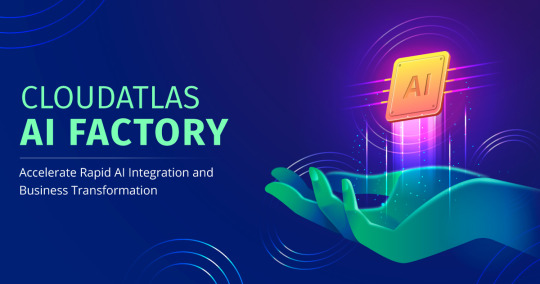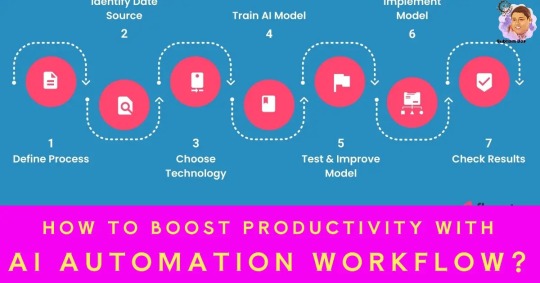#Workflow Optimization AI
Explore tagged Tumblr posts
Text
Wolf Bot Ai Introduces Human-like AI Voice Assistants, Revolutionizing Business Workflows

FOR IMMEDIATE RELEASE – In an innovative leap forward, Wolf Bot Ai proudly announces the launch of its latest technological marvel, Human-like AI Voice Assistants. This groundbreaking development is set to redefine the landscape of business operations, offering a seamless integration of AI voice technology into everyday workflows. These AI voice assistants are not just tools; they are game-changers in automating customer interactions, enhancing accessibility, and driving efficiency across various business domains. Transforming Customer Service with AI Voice Technology Wolf Bot Ai’s AI Voice Assistants leverage cutting-edge technology to deliver a human-like conversational experience that is both engaging and effective. Businesses now have the power to automate customer service tasks, from handling incoming calls to scheduling appointments, without sacrificing the personal touch that customers value. This integration of AI voice assistants into business workflows promises not just operational efficiency but also an enhanced customer service experience that keeps businesses ahead in a competitive market. The Benefits of AI Voice Assistants in Business Automating Customer Interactions: With capabilities ranging from answering calls to managing bookings, these AI voice assistants are at the forefront of automating customer service, ensuring businesses remain operational 24/7. Hands-free Operation and Accessibility: The human-like AI voice assistants offer a hands-free operational advantage, making technology accessible and inclusive, benefiting a wide array of users including those with disabilities. Enhancing Business Efficiency: By streamlining appointment scheduling and other routine tasks, businesses can allocate human resources to more strategic roles, thus enhancing overall productivity. Addressing Privacy Concerns and the Future of AI Voice Technology In developing these AI voice assistants, Wolf Bot Ai places a strong emphasis on privacy and data protection, ensuring users’ information remains secure while leveraging the benefits of AI. As we look to the future, the adoption rates of AI voice assistants in businesses are expected to soar, reflecting the growing trust and reliance on AI technologies to drive innovation and efficiency. About Wolf Bot Ai Wolf Bot Ai stands at the forefront of AI technology development, specializing in creating solutions that transform business operations and enhance customer experiences. With a focus on innovation, accessibility, and efficiency, Wolf Bot Ai is committed to pushing the boundaries of what is possible with AI, making advanced technology accessible to businesses of all sizes. For further information, please contact: William Schimensky [email protected] Read the full article
#AI Voice Assistants#Business Efficiency Automation#Human-like Interaction#Customer Service Innovation#Workflow Optimization AI#Privacy-Focused AI Technology#AI Integration in Business#Operational Productivity AI#Advanced Communication AI#Competitive Edge AI Technology
0 notes
Text
AI Customer Support: Enhancing the Customer Experience
AI has massive potential for businesses in all niches. Perhaps its most transformative niche, however, is in making customer service better. Many companies have already embraced AI customer support. In fact, when you contact customer support, you might be talking to an AI assistant without even knowing it! AI has immense power to help businesses provide faster customer service. Today, we explore just some ways AI is changing how companies help their customers.
How AI Customer Support Makes Service Better
As we’ve noted before on the blog, AI is best thought of as a super-helpful digital assistant that never gets tired. Anyone who has worked in customer service knows how invaluable that could be. AI can answer customer questions 24 hours a day, 7 days a week. Now, picture your customers enjoying that constant access. No more waiting until Monday or after lunch to get the help they need.
Of course, generative AI in customer experience is still a tool, not a master. It can’t understand every single niche customer query it encounters. However, AI assistants can handle many common customer questions right away. Think of simple, common queries like “Where’s my package?” or “What is my account balance?”.
AI can help with that in seconds. This means customers get answers faster and don’t have to wait for a human agent to become available. For those with complex issues to address, AI customer support can forward the matter to a human to deal with properly.
Real Examples of Generative AI in Customer Experience
You have already seen generative AI in customer experience in action. Think of those pop-up chat boxes that are now common on most websites. These chatbots use generative AI to understand customers’ questions and provide helpful answers.
Big companies like Amazon and Apple are already using AI to figure out what customers might need help with. Often before they even ask! For example, if you’ve bought something recently, the AI might show you tracking information as soon as you contact customer service.
As you can see, the results are subtle and aren’t always a case of AI ‘pretending to be customer support.’ Instead, AI has become a useful tool to simplify the support cycle while still allowing for human help where needed.
Making Things Personal with AI Customer Support
Personalization has become a key marketing tool. People don’t want to see things that are sort of relevant to them. They want direct, relevant and personal suggestions.
AI can ‘remember’ previous conversations with individuals. This allows it to personalize responses and other cues for the user. If you’ve talked to customer service before about your shoe size, the AI will remember that next time you shop. This makes the experience feel more personal, like talking to someone who knows you.
AI can also offer smart suggestions based on what customers usually buy. It can recommend other things people may like and easily offer that coveted personalized experience.
Helping Human Agents Do Better

So, AI isn’t a replacement for a great customer service team. It’s another team member who helps them work better. When customers have complicated problems, AI can quickly give the human agents all the important information they need.
This means the agent can focus on solving the problem instead of searching for information. The AI agent can offer advice directly when the inquiry is simple and straightforward. This leaves the human agent ready to help the next person in the queue with a complex query.
Making Sure Customers Are Happy
Using generative AI in customer experiences also lets businesses police their service. AI can analyze customer feedback, reviews and even the tone of voice in phone calls to understand how customers really feel.
The quicker you can spot a customer service issue, the better you can respond to it. It’s also useful to tell who is simply ‘having an opinion’ and where there is a genuine service issue. This lets you take any steps needed to address the matter.
Nor has generative AI in customer experiences reached its full potential yet. Developers are working hard to help AI customer support better understand emotion, solve complicated problems and predict customer needs. They’re also working hard to improve how it communicates. There’s a bright future ahead for human-AI collaboration.
Making AI Customer Support Work Better for Everyone

Using generative AI in customer support has benefits for everyone concerned. For business owners, AI in customer service means:
Helping more customers without hiring more staff
Keeping support services running 24/7 without extra cost
Understanding customer needs better
Making sure problems get fixed faster
On the other side, for customers, it means:
Getting help right away, any time of day
Not having to explain the same problem multiple times
More personalized service
Faster solutions to common problems
In short, the future of generative AI in customer experience is burning brightly. The key for businesses looking to implement AI customer support is to start small and build from there. Trial a simple chatbot trained on your most common service questions. Begin to use AI tools to organize your customer information.
Once you have a few implementations in place, you can add more as you learn what works. And always remember: AI works best when it’s part of a team. The goal is to make things better for your customers, not to replace human connection completely.
AI customer support has immense potential to reshape customer service for the better. It’s helping businesses provide faster, more personal service while making things easier for both customers and employees.
As AI keeps getting better, we can expect even more improvements in how generative AI customer experiences help businesses help their customers. If you’re ready to embrace the potential of AI customer support for your business, reach out to AI-First Mindset™ today to help you get started.
0 notes
Text
Marketing Automation the Future? Here’s What Experts Say
Discover the future of marketing automation and how AI-driven solutions are transforming digital strategies. Learn expert insights,

#Marketing automation#sales funnel#lead nurturing#customer engagement#conversion optimization#automated emails#CRM integration#workflow automation#digital marketing#AI marketing#sales growth
0 notes
Text
Workplace Efficiency in the Age of Innovation
Technological advancements have reshaped workplace efficiency across industries, revolutionizing operations, communication, and decision-making. From artificial intelligence (AI)-driven automation to enhanced cybersecurity measures and remote work solutions, businesses are integrating technology to remain competitive in an evolving landscape. Companies that leverage efficient digital tools optimize workflows, increase productivity, and enhance communication.
AI-driven tools streamline repetitive tasks, improve accuracy, and allow professionals to focus on strategic responsibilities. Meanwhile, businesses are prioritizing cybersecurity strategies to protect digital assets, while remote work solutions continue to drive workplace flexibility. Organizations must adapt to these shifts to maintain efficiency and ensure long-term success in an increasingly digital environment.
Let's explore how technology is reshaping key aspects of workplace efficiency, from automation to collaboration.
The Role of AI and Automation in Streamlining Workflows
AI-driven tools are transforming business processes by minimizing manual tasks, increasing precision, and allowing teams to focus on strategic initiatives. Businesses are also integrating AI-powered solutions in management to enhance productivity and increase operational agility. Modern product managers now use AI to assist with things like estimating timelines, making risk assessments, and completing document searches.
The integration of AI in product management is also influencing business strategies by analyzing market trends, predicting completion times, and optimizing routine tasks. AI-driven analytics also help businesses tailor offerings to customer needs, improving overall efficiency. Automation tools further contribute by optimizing supply chains, improving customer service, and eliminating inefficiencies. With AI-powered solutions, businesses can focus on growth while maintaining seamless operational workflows.
Cybersecurity Enhancements for a More Secure Workplace
As businesses become more dependent on digital systems, cybersecurity remains a priority. Cyber threats are growing in sophistication, prompting companies to implement AI-driven security solutions to detect and mitigate risks. AI-powered threat detection systems analyze patterns, identify anomalies, and respond to security breaches before they escalate.
Organizations must also prioritize cybersecurity awareness to reduce risk. Employee training programs, device hardening protocols, end-to-end encryption, and proactive monitoring help safeguard sensitive data. A comprehensive cybersecurity strategy strengthens an organization's defenses and minimizes the risk of a potentially costly breach. Businesses that take a proactive approach to cybersecurity also earn the trust of consumers, who care about their personal data now more than ever before.
Technology’s Impact on Workplace Mobility and Remote Work Efficiency
Cloud computing, digital collaboration platforms, and AI-driven mobility solutions have redefined remote work. Businesses rely on cloud-based systems to store data securely, allowing teams to access information from anywhere. Companies can also make employee relocation easier by offering incentives and implementing new technology. For example, AI optimizes workplace relocation by streamlining logistics, predicting potential challenges, and enhancing workforce mobility.
Furthermore, digital collaboration tools support real-time communication, improving productivity for remote teams. AI-powered virtual assistants, automation software, and project management platforms streamline workflow optimization. Companies that invest in these technologies empower employees with flexible work environments, leading to higher engagement and efficiency.
Decision-Making and Predictive Analytics
Big data and AI-powered analytics are reshaping communication and decision-making across industries. AI algorithms are capable of wielding complex data sets to accurately forecast market trends and help managers make more informed decisions. This can identify opportunities for growth and drive innovation.
Predictive analytics has significant applications across various industries. In healthcare, AI has already made waves by successfully uncovering cures for diseases with the support of human researchers. Meanwhile, the financial sector relies on AI-powered analytics for risk assessment, fraud detection, and investment planning. Retailers also use predictive models to enhance inventory management and personalize customer experiences. Businesses that integrate predictive analytics into their strategies can gain a competitive advantage by improving efficiency and anticipating market demands.
Balancing Technology with Workplace Culture
While technology significantly enhances workplace efficiency, it is essential to balance innovation with a human-centric workplace culture. Employees play a critical role in the successful adoption of new technologies. Even the most advanced systems may fail to achieve their intended impact without proper training, communication, and engagement.
Companies should prioritize employee training programs to ensure staff members feel confident using AI-driven tools and digital platforms. Encouraging a culture of adaptability and continuous learning can help organizations transition smoothly into technology-driven operations. Employee feedback should also be incorporated into technology adoption strategies to ensure that solutions enhance—not hinder—daily workflows.
While AI-driven chatbots and automation tools improve response times, personal engagement and empathy remain irreplaceable. Businesses must balance automation and human interactions to provide customers and clients with a seamless yet personalized experience.
The Evolution of Workplace Collaboration Tools
Collaboration has evolved as businesses adopt digital tools that enhance teamwork and efficiency. Video conferencing platforms, cloud-based document sharing, and AI-powered scheduling assistants help organizations maintain seamless communication, whether teams are working remotely or in the office. These tools improve workflow by allowing employees to collaborate in real-time, reducing delays in project execution.
AI-driven collaboration tools provide automated meeting summaries, sentiment analysis, and task prioritization, and further streamlining operations. Businesses are also integrating virtual reality (VR) into collaboration efforts, enabling immersive experiences for training and team-building activities. Organizations must continue adopting tools that enhance communication and foster productivity as workplace dynamics shift.
Future Trends in Workplace Technology
The workplace will continue evolving as technology advances. Emerging trends like AI-driven chatbots, machine learning-based automation, and blockchain technology will further enhance efficiency and security. AI-powered support systems are improving customer experience, too, by reducing response times when consumers raise a query.
Augmented reality (AR) and virtual reality (VR) improve workplace efficiency, too. These technologies enable immersive training experiences, helping employees develop new skills in real-time. AI-driven virtual workspaces foster collaboration across teams, break geographical barriers, and enable seamless remote work interactions.
AI-powered language translation tools also improve global business communication, ensuring seamless collaboration among multilingual teams. Organizations that embrace these innovations will stay ahead in an increasingly competitive business environment.
Conclusion
Technology transforms workplace efficiency, influencing how businesses operate, collaborate, and secure digital assets. AI-driven automation, cybersecurity enhancements, remote work solutions, and predictive analytics drive operational success.
However, businesses must also focus on workplace culture to ensure employees remain engaged and adaptable to change. AI alone isn’t enough to create a culture of innovation. Instead, strategic leaders must make informed choices to empower those employees who make a difference in the workplace. Empowered, motivated employees will make the most of tools like AI and workflow software and are sure to identify opportunities that boost he business’ bottom line.
Katie Brenneman
Katie is a passionate writer specializing in time management, marketing, and education-related content. When she isn't writing, you can find her with her nose buried in a book or hiking with her dog, Charlie. To connect with Katie, you can follow her on Twitter.
Share in the comments below: Questions go here
#workplace efficiency#efficiency#age of innovation#technological advancements#digital tools#cybersecurity#digital environment#AI-powered solutions#product management#workplace mobility#remote work efficiency#digital collaboration#virtual assistants#automation software#project management platforms#workflow optimization#market trends#identify opportunities#growth and innovation#productivity#augmented reality#virtual reality
0 notes
Text
Revolutionising Estimations with AI: Smarter, Faster, and More Reliable Predictions
Revolutionising estimations with AI transforms project planning by enhancing accuracy and reducing uncertainty. Unlike traditional methods prone to bias, AI-driven estimations leverage historical data and predictive analytics for more reliable forecasts.
Revolutionising estimations with AI is transforming how teams predict timelines, allocate resources, and improve project planning. Traditional estimation methods often rely on human intuition, which can introduce biases and inconsistencies. AI offers a data-driven approach that enhances accuracy, reduces uncertainty, and allows teams to focus on delivering value. If you’re interested in…
#agile#AI#automation#data-driven decisions#Efficiency#estimations#Forecast.app#forecasting#Jira#LinearB#machine learning#predictive analytics#Project management#risk management#software development#workflow optimization
0 notes
Text
AI Factory: Pioneering Innovation with Advanced AI Solutions

In today’s rapidly evolving digital landscape, businesses face unprecedented challenges and opportunities. Artificial Intelligence (AI) has emerged as a transformative force, enabling organizations to optimize operations, enhance decision-making, and deliver exceptional customer experiences. Enter the AI Factory—a revolutionary platform designed to empower businesses with scalable AI solutions tailored to their unique needs.
What is AI Factory?
The AI Factory is a cutting-edge platform that brings together advanced AI capabilities to streamline the development, deployment, and management of AI solutions. It serves as a comprehensive hub for:
AI Use Case Development
Proof of Concept (POC) Implementation
AI Solution Deployment
Lifecycle Management of AI Models
Explore more about the transformative potential of AI Factory on UnifyCloud’s AI Factory platform.
Why Businesses Need an AI Factory
The AI Factory addresses several critical pain points for organizations:
Scalability: Develop and deploy AI solutions that grow with your business.
Customization: Tailor AI models to address industry-specific challenges.
Efficiency: Automate workflows and reduce operational inefficiencies.
Cost Optimization: Manage resources effectively with tools like CloudAtlas AI Cost Optimize.
Industry-Specific Applications
Healthcare
The healthcare sector is witnessing a paradigm shift with AI-driven innovations:
Medical Imaging: Deploy AI POCs to analyze radiology images and identify anomalies with precision.
Patient Care: Leverage AI for personalized treatment plans and efficient hospital management systems.
Predictive Analytics: Harness AI to predict disease outbreaks and optimize resource allocation.
Learn more about how AI is revolutionizing healthcare on UnifyCloud’s AI solutions page.
Retail
Retail businesses can enhance customer experiences and streamline operations through AI:
Personalized Shopping: Use AI to analyze customer behavior and provide tailored recommendations.
Demand Forecasting: Implement AI POCs to predict market trends and adjust inventory levels accordingly.
Sentiment Analysis: Employ AI-driven tools to gauge customer feedback and improve service quality.
Explore how AI empowers retail on CloudAtlas AI Factory.
Finance
AI is transforming the financial services industry with:
Fraud Detection: Develop AI POCs to identify and prevent fraudulent activities in real-time.
Credit Risk Management: Utilize AI to assess creditworthiness and minimize risks.
Banking Automation: Enhance operational efficiency with generative AI for routine tasks.
Discover UnifyCloud’s innovative AI Guardian tool for compliance and security at CloudAtlas AI Guardian.
Manufacturing
The manufacturing industry benefits from AI in numerous ways:
Predictive Maintenance: Avoid equipment downtime with AI-driven insights.
Supply Chain Optimization: Streamline logistics and reduce costs with AI-powered analytics.
Product Design: Utilize generative AI to create innovative product designs.
For more insights, visit UnifyCloud’s CloudAtlas AI platform.
Construction
AI is making significant inroads in the construction industry:
Project Management: Implement AI POCs to manage timelines and resources effectively.
Safety Monitoring: Use AI to ensure worker safety and compliance with regulations.
Smart Infrastructure: Plan and execute intelligent infrastructure projects with AI insights.
Energy
The energy sector can achieve sustainability goals with AI:
Renewable Energy Forecasting: Predict energy generation patterns to optimize usage.
Smart Grid Management: Enhance energy distribution with AI-driven analytics.
Sustainable Planning: Leverage generative AI for eco-friendly energy solutions.
Visit UnifyCloud’s CloudAtlas AI Factory to explore sustainable AI innovations.
Solution-Specific Capabilities
AI Development and Deployment
Model Training: Build and train robust AI models tailored to specific business needs.
Lifecycle Management: Manage AI models from development to deployment.
Generative AI Solutions: Create innovative content and workflows with advanced generative AI tools.
Learn how CloudAtlas AI simplifies AI development and deployment.
Data Analytics
Big Data Insights: Analyze vast datasets for actionable insights.
Predictive Analytics: Forecast trends and make data-driven decisions.
Visualization: Use generative AI for intuitive and impactful data visualizations.
Automation
Business Process Automation: Streamline operations with AI-powered automation tools.
Robotic Process Automation (RPA): Implement AI POCs for efficient task automation.
Workflow Optimization: Enhance productivity with intelligent automation solutions.
Sustainability and Customer Experience
Environmental Impact Assessments: Use AI to evaluate and minimize ecological footprints.
Personalized User Experiences: Leverage generative AI for tailored customer interactions.
Sentiment Analysis: Gauge customer feedback to refine services.
Why Choose UnifyCloud’s AI Factory
UnifyCloud’s AI Factory offers:
Comprehensive Solutions: From AI development to deployment, all under one roof.
Proven Expertise: Decades of experience in delivering AI-driven business innovations.
Customizable Tools: Tailored solutions to meet unique industry demands.
Cost Efficiency: Optimize your investments with AI Cost Optimize tools.
Discover the future of AI with UnifyCloud’s CloudAtlas AI Factory.
Conclusion
The AI Factory is more than a platform; it’s a gateway to innovation and growth. By integrating AI into your business, you can unlock new opportunities, drive efficiency, and stay ahead in a competitive market. With UnifyCloud’s comprehensive suite of AI solutions, the journey from concept to execution becomes seamless. Explore the limitless possibilities of AI with UnifyCloud’s AI Factory today.
Learn More About AI Factory from Azure Marketplace – AI Factory | AI Cost Optimize | AI Guardian
#AI Development Platform#AI Proof of Concept#AI Pilot Deployment#AI Production Solutions#AI Innovation Services#AI Implementation Strategy#AI Workflow Automation#AI Operational Efficiency#AI Business Growth Solutions#AI Cost Optimization#AI Cost Management#AI Cost Reduction Strategies#AI Cost Efficiency Solutions#AI Cost Control Services#AI Cost Savings#AI Cost Monitoring#AI Cost Assessment#AI Integration Solutions#AI Innovation Platforms#AI Compliance Services
0 notes
Text

AI tools optimize editing, SEO, and productivity, setting you up for YouTube success! 🎥✨ Create stunning content, rank higher in searches, and manage your channel like a pro—all with the power of AI. 🚀💡 Click this link : https://tinyurl.com/3tyr7c8x
#ai powered#youtube success#content creation#smart tools#seo optimization#boost productivity#creator tools#digital innovation#youtube growth#effortless workflows#ai for creators#channel growth#digital#youtube tips#ai#tech tools#digital marketing#creator community#content strategy
0 notes
Text
Explore Vast Edge's Content Management Systems (CMS) designed to streamline e-commerce, web, and enterprise content. Our solutions offer user-friendly features, mobile responsiveness, AI integration, and robust security for seamless business growth. Enhance SEO, improve workflows, and boost productivity with scalable, cloud-hosted CMS platforms tailored for enterprises.
#Vast Edge CMS#content management system#e-commerce CMS#web CMS#enterprise CMS#AI-driven CMS#SEO optimization#cloud hosting CMS#mobile responsive CMS#scalable content management#business content solutions#CMS workflow
0 notes
Text
Discover how generative AI solves manufacturing challenges: predictive maintenance, optimized design, quality control, and supply chain efficiency. Innovate your production today!
#AI-Driven Production Enhancements#Generative AI For Process Automation#AI In Manufacturing Intelligence#Generative AI For Manufacturing Improvement#AI In Industrial Efficiency#AI-Enhanced Manufacturing Workflows#Generative AI For Operational Excellence#AI In Production Management#AI-Driven Manufacturing Optimization#Generative AI For Supply Chain Resilience#AI In Process Innovation#AI In Manufacturing Performance#Generative AI For Manufacturing Analytics#AI In Production Quality#AI-Powered Factory Efficiency#Generative AI For Cost-Effective Manufacturing
0 notes
Text
AI Automation Workflow-Productivity
AI workflow automation is transforming the way businesses operate. By integrating artificial intelligence into your workflows, you can automate repetitive tasks, enhance efficiency, and free up your team to focus on strategic priorities. Benefits of AI Workflow AutomationImplementing AI Workflow Automation: Expert TipsStart Small and ScaleFocus on User AdoptionPrioritize Data QualityExamples of…

View On WordPress
#artificial intelligence#automation#productivity#AI automation#workflow automation#productivity hacks#automation tools#productivity tips#AI tools#workflow efficiency#business automation#time management#productivity strategies#AI in business#automation trends#AI productivity#tech automation#AI software#productivity apps#digital transformation#automation benefits#work smarter#AI integration#efficiency tips#automation solutions#AI workflows#AI trends#business productivity#tech productivity#AI optimization
0 notes
Text
Scaling Smart: How AI Helps Businesses Grow Without Chaos
Scaling Smart How AI Helps Businesses Grow Without Chaos When we talk about scaling a business, most people picture endless meetings, growing pains, and a to-do list so long it deserves its own zip code. But what if growth didn’t have to be chaotic? What if AI-powered automation could help businesses expand effortlessly… without the burnout? AI isn’t just a fancy buzzword; it’s the secret…
#AI and business success#AI and workflow automation#AI business strategies#AI chatbots for business#AI customer insights#AI decision-making#AI for business growth#AI for business owners#AI for customer experience#AI for entrepreneurs#AI for scaling startups#AI for small businesses#AI for startups#AI for sustainable growth#AI in e-commerce#AI scheduling tools#AI workflow optimization#AI-driven business scaling#AI-driven marketing#AI-driven productivity#AI-powered analytics#AI-powered automation#AI-powered efficiency#AI-powered operations#AI-powered project management#business automation tools#Business Growth#business growth without chaos#Business Strategy#Entrepreneur
0 notes
Text
Optimizing Your Workflow with Denoise AI: Say Goodbye to Noise
The Importance of Denoising in Video Optimization When it comes to video production, noise can be a major issue that affects the overall quality of your content. Whether you’re filming in a busy street or a crowded room, unwanted noise can distract viewers and take away from the message you’re trying to convey. This is where denoising technology comes in to save the day. Denoising in video…

View On WordPress
#Artificial Intelligence#automatic noise removal#denoise ai#denoising software#enhance post-production#improve video quality#noise reduction tool#seamless editing#video noise removal#workflow optimization
0 notes
Text
How Marketing Automation Saves You 20+ Hours a Week
Save 20+ hours per week with marketing automation! Learn how to automate marketing tasks, improve productivity with automation, and optimize marketing workflow automation for business success.
https://inklingmarketing.co/how-marketing-automation-saves-you-20-hours-a-week/
#Marketing automation#sales funnel#lead nurturing#customer engagement#conversion optimization#automated emails#CRM integration#workflow automation#digital marketing#AI marketing#sales growth
0 notes
Text
How Can Productivity Tools Enhance the Efficiency of AI Call Centers?
The work of AI centers appears to have gained prominence in today’s context more than it has ever had before. As a result, more interaction volume is expected to be handled by AI in automated support which has the potential to be a prime entry-point. However, with such high volumes and speed, new challenges arise, especially in maintaining response personalization and managing operations. This piece dives deeper into the kinds of productivity tools transforming AI call centers, their benefits, and how they maximize efficiency. Let’s explore how these tools are revolutionizing customer interactions.
I. The Key Deficiencies of AI Call Centers
AI call centers were created to be able to provide the necessary response in the shortest amount of time possible. In practice, however, such a goal is rarely met thanks to numerous operational constraints that these AI call centers experience. Knowing these all the more justifies the need for integration of the most appropriate tailored kind of productivity tool.
Large Call Center traffic
The more calls to be entertained, the higher the number of stressed resources to be entitled to give muted responses with long or no replies. Repeatedly, agents don’t necessarily have to answer more frequently asked questions. Instead, it is the lesser ability and attention left for the more in-depth queries about the client issues.
Personalization Demands
These days, customers are looking for something more than ordinary interactions, however, call centers powered by AI do not always find it easy to provide highly engrossing interaction. Baring the necessary tools, and meeting personalization expectations can sometimes be an exercise in futility or very tedious.
Compliance Requirements
In terms of activities done by such establishments, there are certain regulations that need to be accommodated. All the same, achieving the compliance bars across all interactions is not that easy considering that there is a call volume and its interactivity too.
Optimizing Agent Performance
Motivating and enhancing the efficiency of agents in workplaces characterized by monotony induced by repetitive duties is no mean feat. High turnover rates can also be a distress signal due to depressions which can, in turn, affect the quality and the continuity of services offered.
These operational difficulties call for the need for productivity tools that will assist an AI powered course of action to maintain the customer satisfaction levels required.
II. Key Productivity Tools Revolutionizing AI Call Centers
AI Call centers cannot work without tools that allow them to strategically map their obstacles and tackle so many workflows and agent tasks for instance.
Automation Software
Automation is fundamental in any AI call center. This takes care of repetitive elements in a center like call responses or mapping, which allows agents to get to the thought-provoking problems. Different types of automation tools manage tasks and aid in process and workflow enhancement. Such tools can be incorporated within the customer relationship management (CRM) applications to help automate processes within the system, saving agents from constantly repeating activities and allowing them to concentrate on more personalized parameters of customer engagement.
Workflow Management Solutions
Project management tools help to make the organization of workloads more organized by ensuring certain activities are performed at certain times. Such tools organize and ensure that agents behave in a timely and proper manner. This makes the turnaround time decrease and the level of customer satisfaction increase.
Real-Time Analytics and Reporting Tools
Analytics tools help business entities accomplish their desired goals by throwing light on the performance of agents, the nature of the calls, and the customer's status. With the availability of such reports in real-time, the managers are able to get a tight grip on the lack of an issue and may change their resources as per requirement. This healthy practice of making use of data helps increase service delivery day by day.
AI-Driven Knowledge Bases
Knowing that there are volumes of information available and that a much simpler solution to a customer question breeds confidence and keeps agents at ease, knowledge bases do not result in idling or inconsistencies in responses if the agents can answer questions without hunting down information.
Collaboration Platforms
The fast-paced nature of businesses requires that teams communicate and work together on projects. If any customer holds a complaint, such collaboration tools enable the departments and agents to assist in resolving the issue much quicker. These tools help eliminate response coordination time, thus enhancing the overall experience of the customer.
Comparison Table: Key Productivity Tools and Their Benefits
table { font-family: arial, sans-serif; border-collapse: collapse; width: 100%; } td, th { border: 1px solid #dddddd; text-align: left; padding: 8px; } tr:nth-child(even) { background-color: #dddddd; }
Tools Purpose Benefits Automation Software It handles, for example, call routing and data capturing from repetitive functions. Empowers agents to handle intricate processes and shortens handling time. Workflow Management Enhances processes in work, such as determining who performs which processes and tracking how many. Enhances the time it takes for customers to be attended to and enhances customer experience. Real-Time Analytics Helps in obtaining crucial information on how agents and customers interact with each other. Aids in making valid and accurate decisions and increases performance levels. AI-Powered Knowledge Base These tools help agents perform better as they do not need to search for knowledge when required. Diminishes delays and keeps the company in line with its set standards. Collaboration Platforms These tools are used across the organization’s departments to enhance response speed in problem-solving processes. Improves performance by addressing issues faster.
III. In What Ways Labor Saving Tools Enhance Productivity in the AI Call Center
Improvement and better results in the AI Call Center performance a factors that each productivity tool tackles by addressing specific pain points.
Decreased Call Handling Time
Routine activities such as call routing by the IVR, lessen the time used in handing over the phone to the customer. When most of the low-level work is taken off the agents’ shoulders there is a greater ability to increase the number of calls without a decline in the quality of service during the call.
Improvement of the Agent’s Performance
The presence of customer history and analytics in general assists agents splurge on excessive efforts. Availability of data helps the agents make better and faster service.
Enhanced Resource Management.
With automatic workforce management systems, call volume is estimated, and the number of agents available is scheduled based on that. Thus resources can meet customer needs to eliminate wastage and prevent slow operations during busy periods.
Better Compliance and Correctness
With the presence of the implementation tools, agents are notified of the standards to be followed and their infringements. Thanks to these checks contact monitoring is easier and does not impose any additional tasks on the contact center staff and compliance is increased.
Improvement of the Customer’s Experience
Productivity Tools help to provide an accurate resolution to an issue in the shortest time frame possible. Here's proof that customers have the tools to handle themselves.
IV. Evaluating the ROI of Productivity Tools in AI Call Centers
In addition to the available operational enhancements, these efficiency tools produce a robust return on investment. Here’s the type of increase in qualitative and financial terms they create.
Cost Savings
Automation of monotonous activities allows call centers to set upon fewer men as the need arises. This means major savings since fewer agents will be idle and inactive performing simple chores thereby allowing less cost.
Productivity Metrics
Success is measured with the help of certain key performance indicators such as Average Handle Time, First Call Resolution rates, and Net Promoter Score. Better metrics create an opportunity for other aspects to be enhanced so that a clearer conception is developed of how the efficiency tools enhance call center performance.
Long-Term Benefits
Eventually, these tools assist in promoting employee contentment and lower the rate of attrition. Such security in staffing coupled with higher retention of customers’ trust leads to better brand image and higher profits.
Frequently Asked Questions
1. How do productivity tools integrate with existing AI call center systems? Most of the productivity apps feature APIs besides having practical integration capabilities with several third-party СRM and AI tools. Such aspects keep the contact touches made between customers and companies within sight so they could occur in real-time.
2. Are there productivity tools specifically for compliance management? In fact, there are many tools that exist today that support compliance based on automated tracking, reporting capacities, and regulatory notice alerts. These tools provide a fair amount of support toward meeting the requirements of GDPR and TCPA under passive management rather than an active involvement by the management.
3. What initial costs should I consider when implementing productivity tools? Some of the costs include the licensing, integration, and training for software. Though most call centers view this as a cost worth the operating and cost savings efficiency from having such long-term investments made.
Conclusion
AI call center productivity tools, as guaranteed to provide maximum efficiency and accuracy. They negate main pain points, including activity redundancies and the absence of process orientation together with actionable intelligence, resulting in increasing the overall customer experience. The ROI that accrues from these tools comes at a breakeven point that justifies cost while availing profitability, whether short-term or long-term, for the call centers. These tools are not just an advancement of the customer service trend; they are the most efficient way of preparing customer service for the future.
Share in the comments below: Questions go here
#productivity tools#AI Call Centers#Enhance Efficiency#Call Center Traffic#Compliance#Optimization#Automated Software#Workflow Management#Analytics
0 notes
Text
#AI#Productivity#Automation#Scheduling#Efficiency#Content creation#Task management#Transcription#CRM#Workflow optimization
0 notes
Text
#AI Factory#AI Cost Optimize#Responsible AI#AI Security#AI in Security#AI Integration Services#AI Proof of Concept#AI Pilot Deployment#AI Production Solutions#AI Innovation Services#AI Implementation Strategy#AI Workflow Automation#AI Operational Efficiency#AI Business Growth Solutions#AI Compliance Services#AI Governance Tools#Ethical AI Implementation#AI Risk Management#AI Regulatory Compliance#AI Model Security#AI Data Privacy#AI Threat Detection#AI Vulnerability Assessment#AI proof of concept tools#End-to-end AI use case platform#AI solution architecture platform#AI POC for medical imaging#AI POC for demand forecasting#Generative AI in product design#AI in construction safety monitoring
0 notes